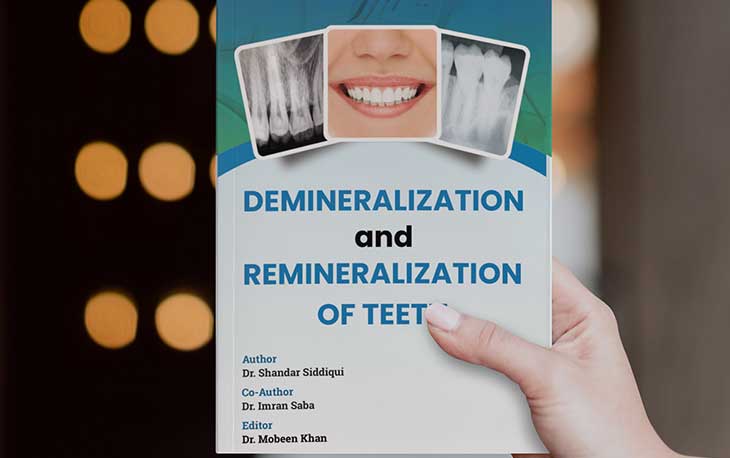Dental caries is defined as a multifactorial, transmissible, infectious oral disease caused primarily by the complex interaction of cariogenic oral flora (biofilm) with fermentable dietary carbohydrates on the tooth surface over time. At the tooth surface and sub-surface level, dental caries results from a dynamic process of attack (demineralization) and restitution (remineralization) of the tooth matter. It is essential to understand that carious lesions, or cavitations in teeth, are signs of an underlying condition, an imbalance between protective factors (i.e., those favouring remineralization) and pathologic factors (i.e., those favouring demineralization), balance tilting towards the latter. In clinical practice, it is very easy to lose sight of this fact and focus entirely on the restorative treatment of caries lesions, failing to treat the underlying cause of the disease.
Authors
- Dr. Shandar Siddiqui (M.D.S.), (Paedodontics and Preventive Dentistry),
Vananchal Dental College and Hospital, Garhwa Clinic-Patna Health Care, Sabzibag, Patna-4 - Dr. Imran Saba, M. D. Pathology, Government Medical Officer, Government of Bihar
Editor
- Dr. Mobeen Khan MDS (Oral Medicine & Radiology),
Senior lecturer, Department of Oral Medicine & Radiology, CDCH Safedabad Barabanki, U.P.
Oral and Maxillofacial Specialist and Consultant, Oral and Maxillofacial Radiologist.
Contributors
- Dr. Randhir Kumar, Professor and Head, Dept. of Periodontics and Oral Implantology, Patna Dental College and Hospital, Patna, Bihar, India
- Dr. Sharib Abdus Salam, Sr. Lecturer, Dept. of Periodontics and Oral Implantology, Patna Dental College and Hospital, Patna
- Dr. Safia Haideri, Sr. Lecturer, Dept of Pedodontics and Preventive Dentistry, Patna Dental College and Hospital, Patna
- Dr. Asad Iqubal, Sr. Lecturer, Dept of oral Medicine and Radiology, Patna Dental College and Hospital, Patna
